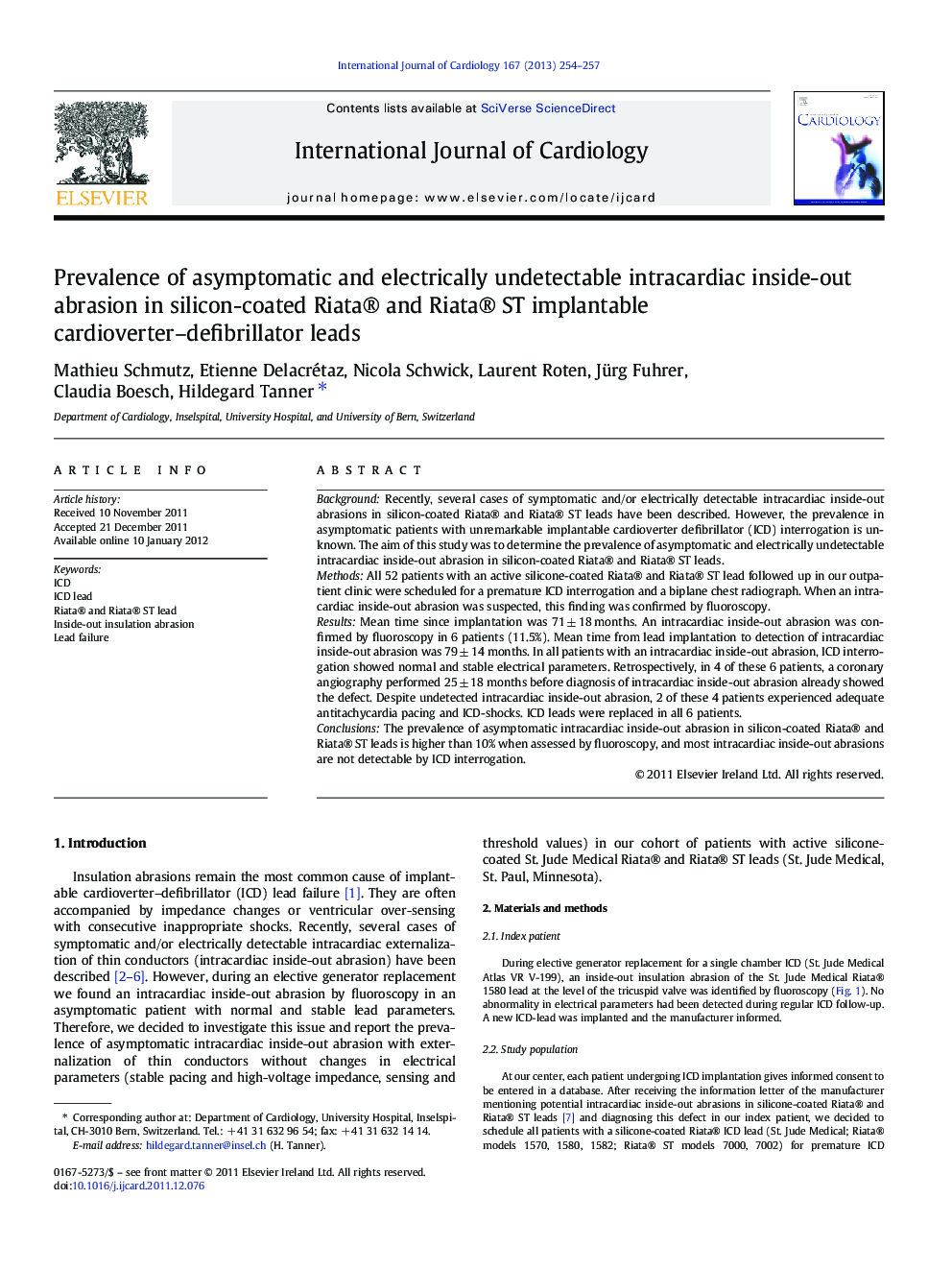| Article ID | Journal | Published Year | Pages | File Type |
|---|---|---|---|---|
| 5975854 | International Journal of Cardiology | 2013 | 4 Pages |
BackgroundRecently, several cases of symptomatic and/or electrically detectable intracardiac inside-out abrasions in silicon-coated Riata® and Riata® ST leads have been described. However, the prevalence in asymptomatic patients with unremarkable implantable cardioverter defibrillator (ICD) interrogation is unknown. The aim of this study was to determine the prevalence of asymptomatic and electrically undetectable intracardiac inside-out abrasion in silicon-coated Riata® and Riata® ST leads.MethodsAll 52 patients with an active silicone-coated Riata® and Riata® ST lead followed up in our outpatient clinic were scheduled for a premature ICD interrogation and a biplane chest radiograph. When an intracardiac inside-out abrasion was suspected, this finding was confirmed by fluoroscopy.ResultsMean time since implantation was 71 ± 18 months. An intracardiac inside-out abrasion was confirmed by fluoroscopy in 6 patients (11.5%). Mean time from lead implantation to detection of intracardiac inside-out abrasion was 79 ± 14 months. In all patients with an intracardiac inside-out abrasion, ICD interrogation showed normal and stable electrical parameters. Retrospectively, in 4 of these 6 patients, a coronary angiography performed 25 ± 18 months before diagnosis of intracardiac inside-out abrasion already showed the defect. Despite undetected intracardiac inside-out abrasion, 2 of these 4 patients experienced adequate antitachycardia pacing and ICD-shocks. ICD leads were replaced in all 6 patients.ConclusionsThe prevalence of asymptomatic intracardiac inside-out abrasion in silicon-coated Riata® and Riata® ST leads is higher than 10% when assessed by fluoroscopy, and most intracardiac inside-out abrasions are not detectable by ICD interrogation.
